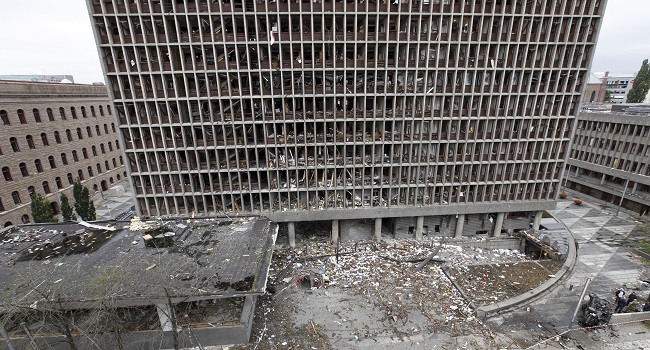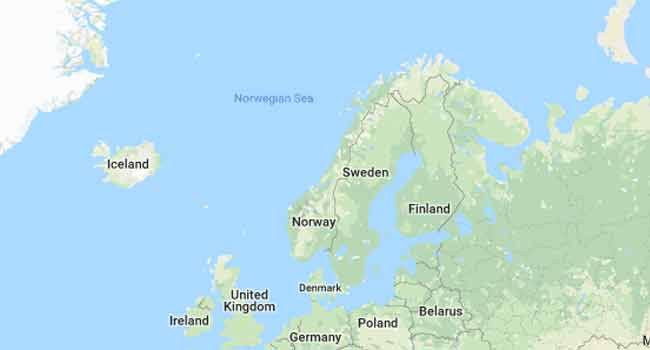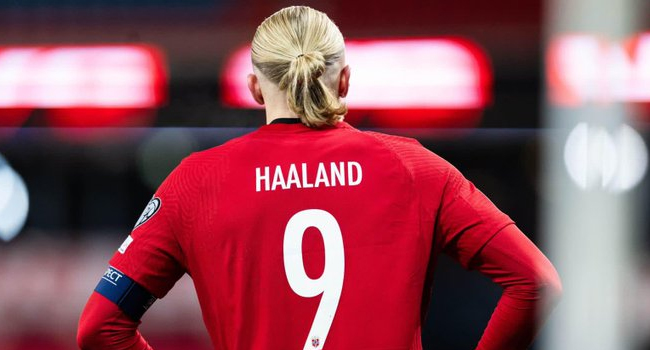
Norway was plunged into horror on July 22, 2011, when right-wing extremist Anders Behring Breivik killed dozens in a bomb attack in central Oslo and a shooting spree on the island of Utoya.
At 3:25 pm on a rainy Friday, a rented van packed with 950 kilogrammes (2,100 pounds) of explosives made from fertiliser detonated outside the tower housing the office of then prime minister Jens Stoltenberg.
Although the bombing killed eight people and injured dozens more, many employees had already left before the blast as Breivik, then aged 32, had been caught in traffic.
Stoltenberg escaped unharmed as he was working at his official residence about 2 kilometres (1.2 miles) away.
Already disguised as a police officer, Breivik heard on the radio of the getaway car he had parked some distance away that the 17-storey building had not collapsed as he had hoped.
Disappointed, he moved on to the second phase of his plan.

– Summer camp –
Breivik took the ferry to Utoya island some 40 kilometres northwest of Oslo, site of an annual summer camp for hundreds of members of the Workers Youth League (AUF), affiliated with the centre-left Labour Party.
At 5:17 pm he stepped off the MS Thorbjorn, a small boat used by the AUF to ferry people across the lake.
He immediately shot long-time camp organiser Monica Bosei — also known as Mother Utoya — and an off-duty policeman in charge of security.
Armed with a Ruger rifle and a Glock pistol, Breivik roamed the island, tracking down distraught young people and posing as a policeman who had come to protect them in order to gain their trust.
He killed 13 people in the island’s hilltop cafeteria, another 10 youths holding hands along a “path of love” running along the shore and 14 more near a small shed housing a water pump.
In total 189 shell casings were collected from the 72 minutes of the massacre.
– Violence unleashed –
Trapped on an island just half a kilometre across, many of the young people threw themselves into the cold waters of the lake to escape.
Alerted by the gunfire, people rushed from a nearby campsite in boats to try and rescue the swimmers — only for Breivik to fire on them as well.
The gunman, who had taken a mixture of aspirin and stimulants ephedrine and caffeine before launching his attack, shouted “you’re going to die, Marxists” at the people in his sights.
Although he twice called out that “I have completed my operation and I want to surrender”, he resumed killing both times.
Breivik shot almost everyone he encountered, methodically finishing off many of the wounded with shots to the head.
Of the 69 victims, 56 were found with bullet wounds to their heads.
– Surrender –
An inflatable boat carrying a police response team from Oslo broke down on the lake, and the officers had to be relayed to Utoya by nearby boaters.
Breivik put up no resistance to police and was arrested at 6:34 pm.
Of the 564 participants of the summer camp, 67 were shot dead and two fell to their deaths or drowned, in Norway’s worst post-World War II tragedy.
Another 33 suffered bullet wounds.
Most of the victims were younger than 20, with the youngest having turned 14 only five days before.
One 18-year-old boy’s body had been riddled with eight bullets.
Breivik said he had aimed to stage “a fireworks display” to draw attention to a 1,500-page anti-immigrant, anti-Marxist screed he dubbed a “manifesto”.
In response, prime minister Stoltenberg promised “more democracy, more openness and more humanity”.
At his trial in 2012, Breivik admitted the facts but pleaded not guilty.
He was sentenced to 21 years in prison, which can be extended indefinitely as long as he is considered a threat to society.




